US photographer Brett Cole finds stories in the least likeliest of places. This series on India's strays, is an extension to his tireless work with Indian NGOs, to give our four-legged friends dignity, love and care
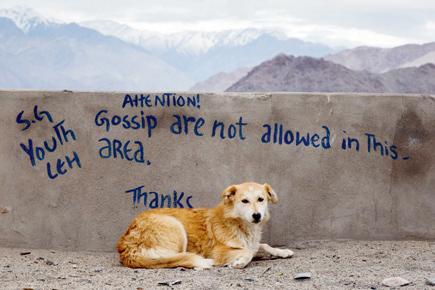
A frame by Brett Cole from Leh, Ladakh, India, where a street dog rests under graffiti telling people not to gossip
Q. How did you decide to focus on photo-documenting strays?
A. In 2010, three months into my first visit to India, I was in Jaisalmer. I had already seen many injured dogs in other cities, but one morning, I spotted a dog in a market by the fort that was in terrible shape. I had to do something so I took it in a taxi, and we travelled 500km to reach an NGO, Tree of Life for Animals (TOLFA) in Pushkar. Since then, I have helped rescue dogs across Indian cities, and have photo-documented the issue to help raise awareness and encourage compassionate treatment.
ADVERTISEMENT
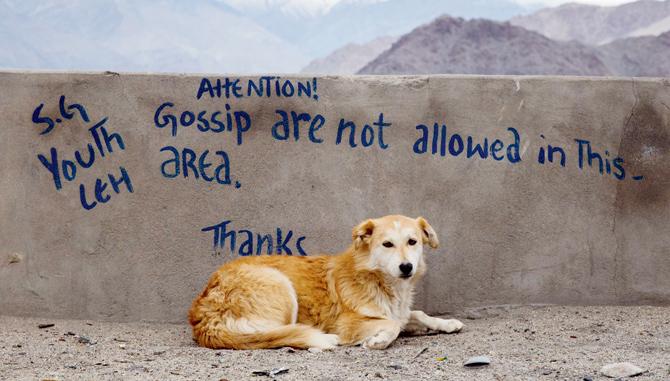
A frame by Brett Cole from Leh, Ladakh, India, where a street dog rests under graffiti telling people not to gossip
Q. The frames appear as if they belong to someone who's familiar with India's landscape, its people and culture. How much time have you spent here?
A. I have spent about two years in India — four trips of six months each since 2010. I've spent time in Pushkar, Kolkata, Mumbai, Leh, Manali, Varanasi, and other cities. I love India dearly. My favourite cities are Kolkata, Varanasi, and especially Pushkar, which is closest to my heart, and which I consider my home in India.
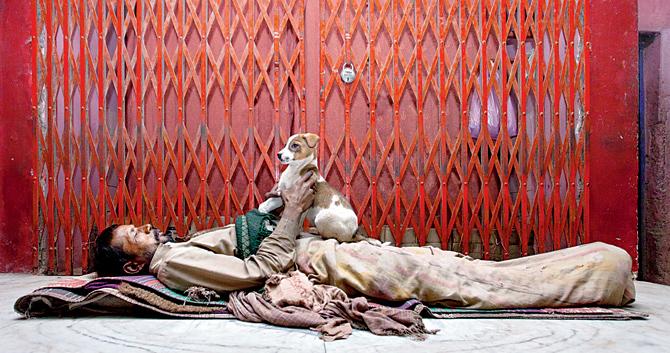
A homeless man sleeps with the company of a family of stray dogs (a mother and three puppies total), Allahabad
Q. You're an animal lover. Tell us more...
A. I love dogs. I grew up with two-three dogs. The small black-and-white Boston Terrier has been the breed of choice in my family. My 72-year-old mother has lived with Boston Terriers for her entire life! I've been a vegetarian for nearly 30 years, so I fit in India. I've helped rescuing dogs, cows, buffaloes, birds and squirrels too!
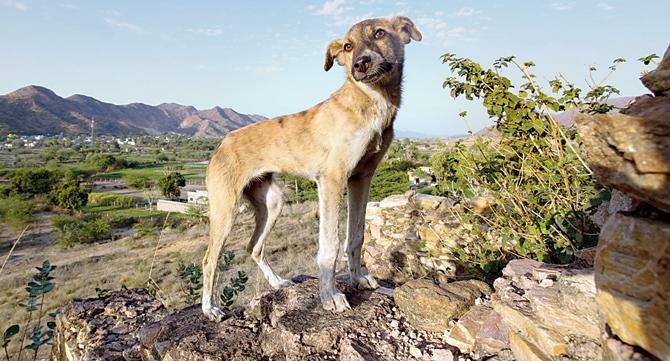
Street dog standing on an old ruined temple atop a hill overlooking the auspicious Budha Pushkar temple complex, Rajasthan
Q. Children are integral to your frames with strays. Why?
A. In any society, you have to nurture the attitudes and actions of the next generation to help mature the society. Shop owners and adults tend to get tired of stray dogs, viewing them as a nuisance. But children rarely seem to take a negative attitude. You'll see how even homeless children care for strays. There can be issues with poor treatment though, often learned from adults, but kids are open to learning new behaviour when given good examples. In Pushkar, I connect with nearby families when I see a new litter of puppies on the street. I buy milk and biscuits, and encourage kids to help feed them. This kind of caring impresses upon them.
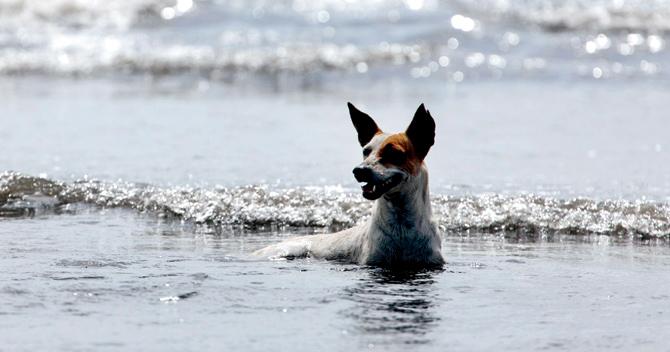
A stray dog plays in the Arabian Sea at Juhu Beach, Mumbai
Q. What were some of the discoveries that emerged while working on this project?
A. It is such a complex issue, with no simple answer but with many pieces that we do understand. More sterilization programmes are needed to control high reproduction rates. Increased rabies vaccinations are necessary to protect the public, and spare the dogs the misery of the disease. Better control of garbage on streets will limit the food source. But there are small things that actually make a big difference. Countless dogs get crippled because they sleep on roads, and eventually, vehicles in motion can clip their legs. A simple act by shop owners, to wake up these dogs and make them move can save a lot of misery. Better connection between the public and the NGOs is needed, so when a dog is in terrible shape, it can receive services. There is a lot of human need in India, and it might be hard to prioritise dogs, but they are our oldest and closest animals companions, and they are here to stay; they are a part of the landscape like cows, goats, and buffalo. Empathy and compassion are powerful aspects, more than personal ambition. These lessons while dealing with animals can help us help people as well.
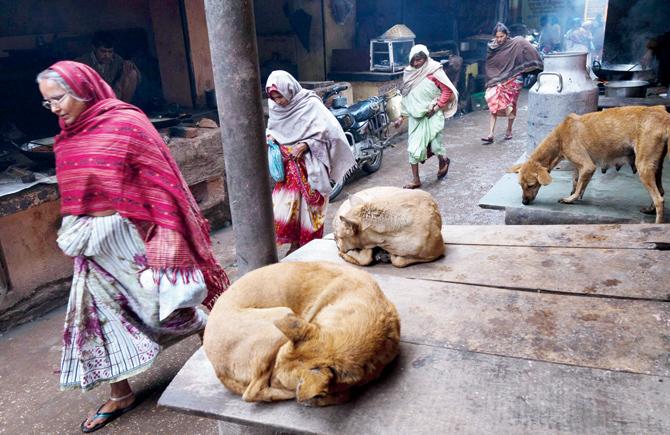
Dogs sleeping on a side street full of sweets makers, Pushkar, Rajasthan. Pics and captions Courtesy/Brett Cole
Q. How did you meet with TOLFA?
A. After bringing the dog from Jaisalmer to TOLFA, I began to spend time in Pushkar and kept returning annually, for the camel fair. I would stay on to explore the villages, the Aravallis, and Thar desert. I am involved with TOLFA and have helped with rescues, photo-documenting their work and improving their website. Their relentless dedication is amazing.
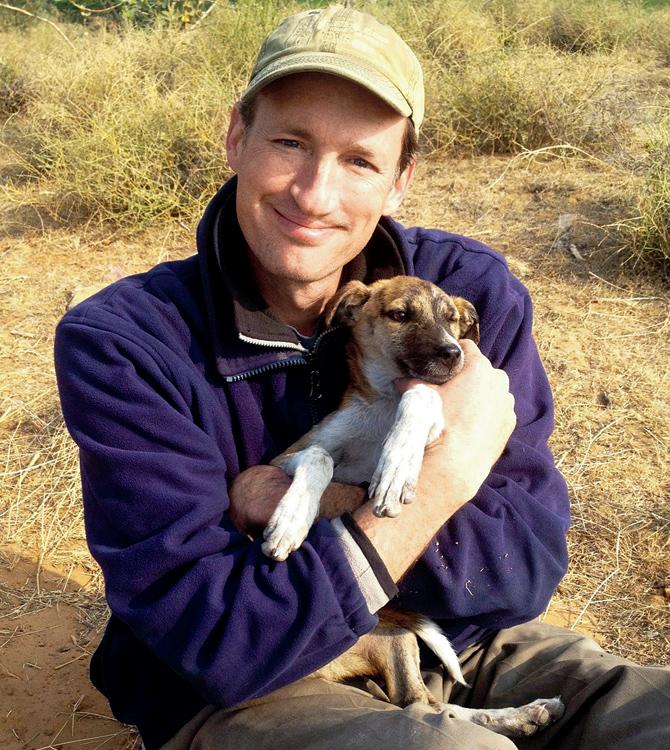
Brett Cole. Photographer & Activis
Q. Tell us about your upcoming projects in India ?
A. In late 2015, TOLFA will launch the Vikas Project in Pushkar, to serve those living in tent camps, with education, medical care, and arts programmes. I will be co-ordinating the project. It's a continuation of social work that I have been doing in Pushkar —assisting with health care and education for needy families. We will also provide special services to differently-abled children, and travel to remote camps in the Thar desert to provide medical care and counselling. Log on to tolfa.org.uk/vikas-project to learn more.
LOG ON TO: www.brettcolephotography.com for galleries on Mumbai and Ganesh Chaturthi
 Subscribe today by clicking the link and stay updated with the latest news!" Click here!
Subscribe today by clicking the link and stay updated with the latest news!" Click here!






